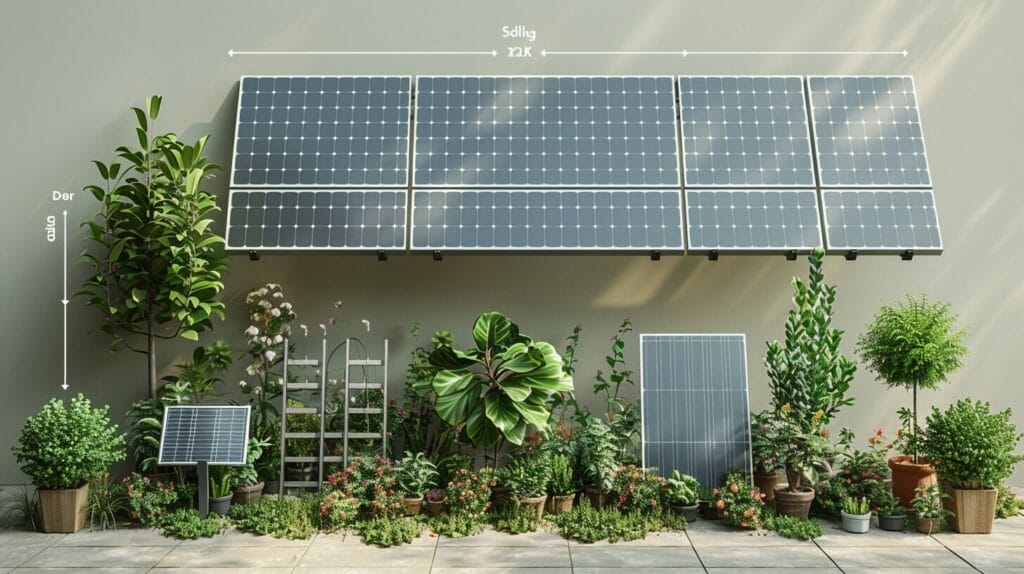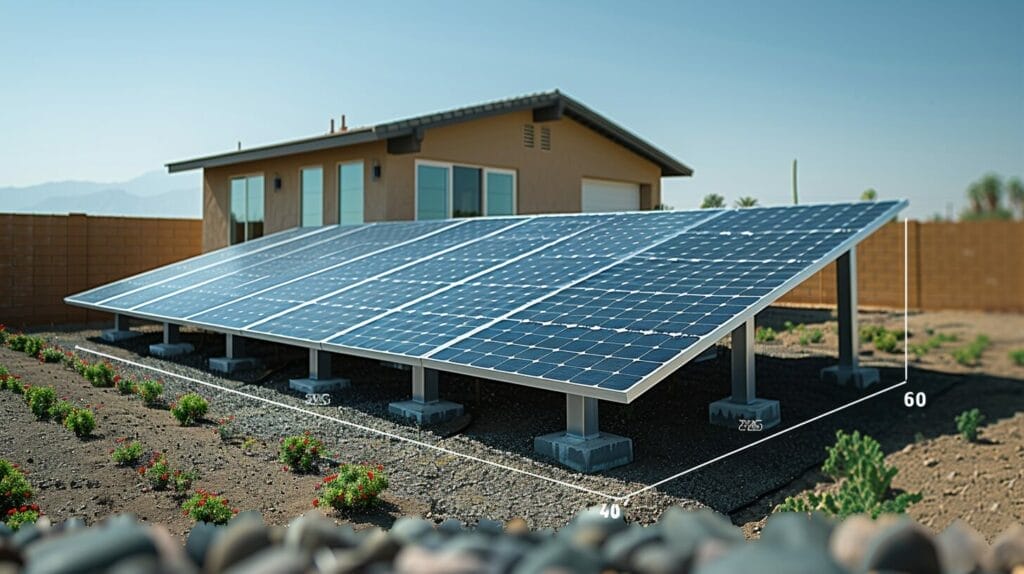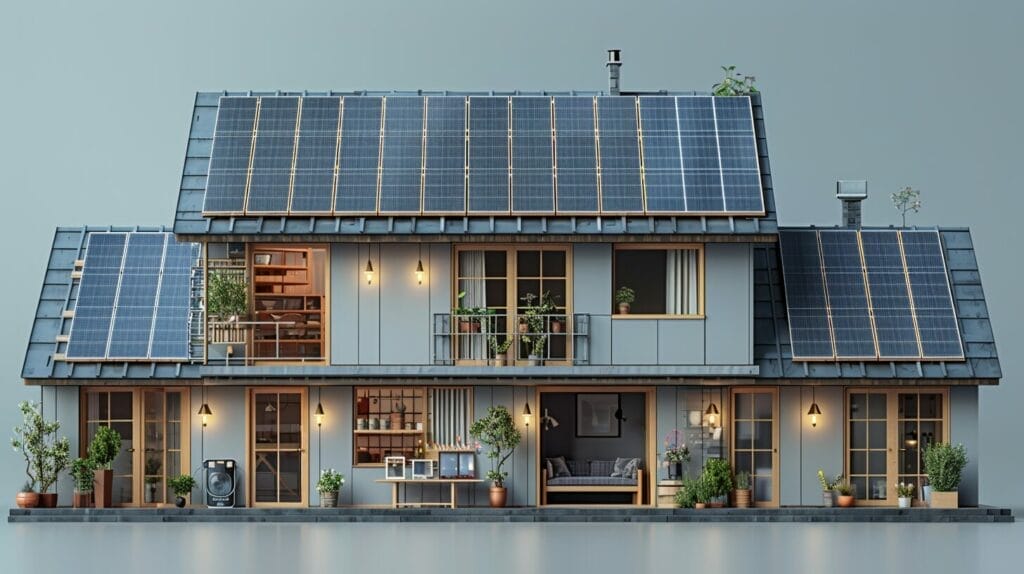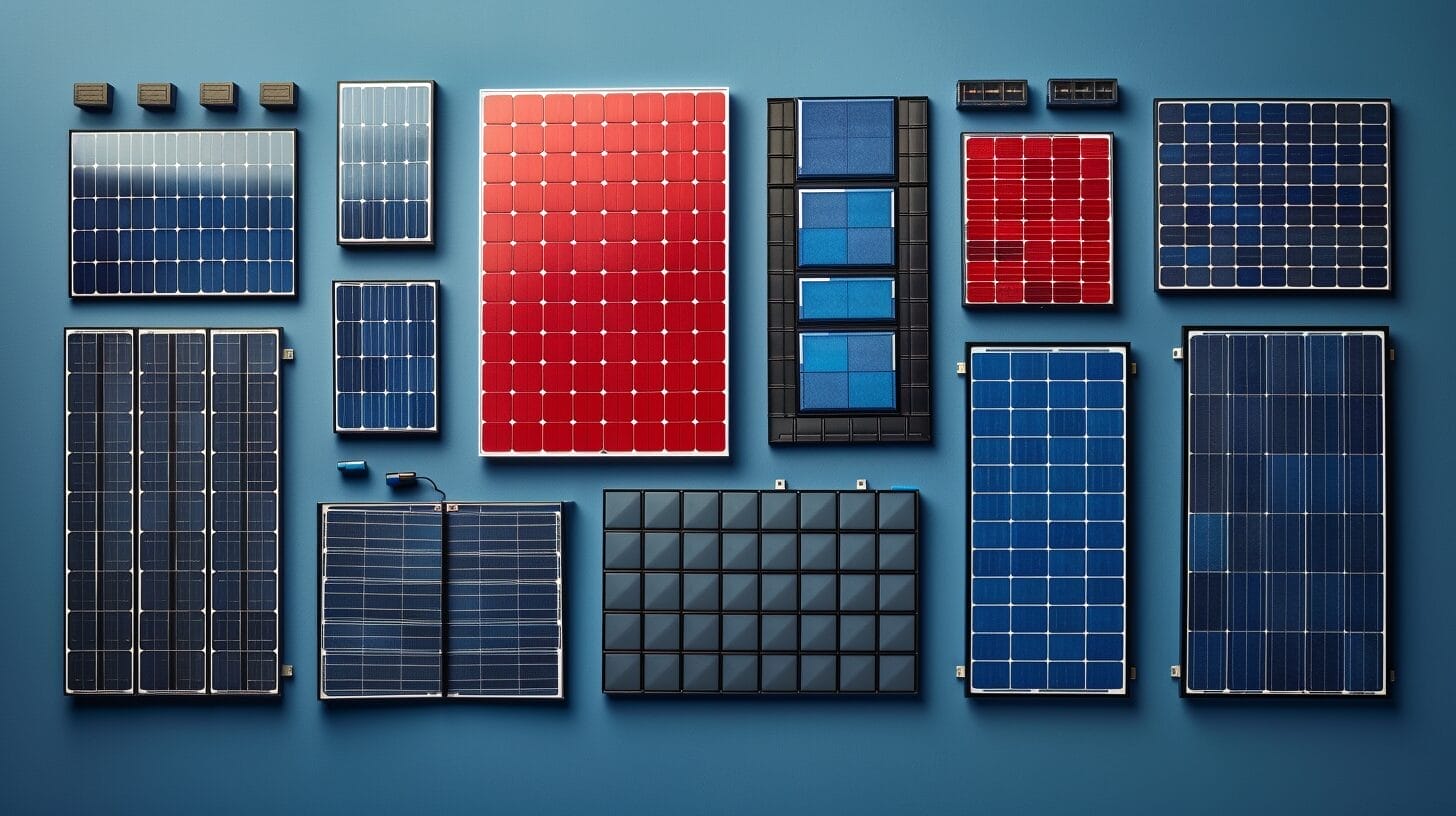Solar Panel Size Dimensions: Finding the Right Dimensions
Are you unsure about your Solar Panel Size Dimensions? This guide offers clear insights and practical tips to help you navigate the selection process with ease. Say goodbye to uncertainty and hello to informed decisions as we explore finding the perfect dimensions for your solar panels. Let’s shed some light on choosing the right size for your solar energy needs!
Key Takeaways
- Consider roof dimensions for panel installation.
- Calculate panel output based on energy needs.
- Analyze panel dimensions in quotes for suitability.
- Compare options for size and efficiency.
- Optimize system for peak performance and efficiency.
Understanding the Importance of Solar Panel Size and Dimensions

Understanding how the size and dimensions of solar panels directly impact their efficiency is essential for maximizing solar power generation. Larger solar panels can accommodate more solar cells, which translates to higher power generation capabilities. The dimensions of the solar panel also affect how much sunlight it can capture and convert into electricity efficiently.
Selecting the right physical size for the solar panels ensures your solar system operates at peak efficiency, maximizing the power output and reducing energy costs. Additionally, advancements in solar panel technology have led to more efficient solar cells being incorporated into panels, further enhancing their power generation capabilities.
As the demand for renewable energy solutions continues to rise, understanding the importance of solar panel size and dimensions is key to harnessing the full potential of solar power.
Evaluating the Standard Solar Panel Sizes: 60-cell and 72-cell Solar Panels

When evaluating standard solar panel sizes, understanding the differences between 60-cell and 72-cell solar panels is crucial. The 60-cell panels are known for their compact dimensions and lighter weight, while 72-cell panels are larger, heavier, and typically offer higher power output due to the additional cells.
When comparing efficiency, the 72-cell panels often have a slight edge over the 60-cell panels. However, the 60-cell panels are more commonly used in residential settings where space might be a constraint. Understanding the dimensions and efficiency of these standard-sized panels is essential for choosing the right fit based on your specific needs.
Factors Influencing the Choice of Solar Panel Size

Factors such as roof dimensions, energy consumption, and physical constraints play a significant role in deciding on the appropriate solar panel size. Understanding your energy consumption patterns is key to calculating the right solar panel size to meet your needs effectively. Physical constraints such as shading, obstructions, and structural limitations must also be taken into account during the selection process. These factors can impact the efficiency and performance of your solar panel system, making it essential to choose a size that aligns with your unique circumstances.
The Best Solar Panel Dimensions for Different Applications

Selecting the ideal solar panel dimensions is essential for maximizing energy efficiency and output for various applications. For residential use, the perfect size of solar panels will depend on factors such as available roof space, energy consumption patterns, and budget constraints.
Commercial installations often prefer larger solar panel dimensions to meet higher energy demands efficiently. Commercial setups typically have more available space, allowing for the use of larger panels that maximize energy production.
In off-grid systems, special considerations need to be made when selecting solar panel dimensions. The best size will depend on the energy needs of the off-grid system, as well as factors like available sunlight and storage capacity.
Can I Use Free Solar Panels in Florida with the Right Size Dimensions?
Yes, you can use free solar panels in Florida as long as they are the right size dimensions for your needs. Many homeowners are taking advantage of the government incentives and tax credits to install free solar panels in Florida, reducing their energy bills and carbon footprint.
Navigating Solar Panel Size and Dimensions in Quotes and Calculations

Understanding solar panel size and dimensions in quotes and calculations is an essential aspect of planning a solar power system. Calculating the panel output is critical for determining the number of panels required to meet energy demands efficiently. By analyzing solar panel dimensions in quotes, you can compare different options based on size and efficiency to choose the most suitable panels for your solar power system.
Conclusion
In summary, selecting the appropriate solar panel size and dimensions is essential for maximizing energy production and efficiency.
By comprehending the standard sizes, factors influencing the choice, and best dimensions for various applications, you can make informed decisions for your solar energy system.
Whether it’s for residential, commercial, or industrial use, finding the right size will guarantee top performance and savings in the long run.
Frequently Asked Questions
How do I determine the right size dimensions for my solar panel system?
The size dimensions for your solar panel system depend on factors like your electricity needs, available roof space, and the output you desire.
What factors should I consider when choosing the size dimensions for my solar panels?
Factors to consider include the number of solar panels needed, the weight your roof can support, the output or wattage required, and the available space for installation.
How can I measure the dimensions of a solar panel?
Solar panels are typically measured in square feet or inches, with common dimensions being around 65 inches by 39 inches for a residential panel.
Do solar panels vary in size between residential and commercial installations?
Yes, residential solar panels are generally smaller in size compared to commercial solar panels, which are larger and have higher output capacities.
What is the average weight of a solar panel?
The weight of a solar panel can vary, but on average, a solar panel weighs around 40-50 pounds per square foot.







